Table of Contents
Our houses, automobiles, and even the streets are covered with billboards and other forms of advertising. The efficiency of advertising has only risen as outcomes are simpler to evaluate as technology has progressed throughout time. We have access to statistics such as the number of people who have seen an ad and how many times they’ve clicked on it. However, what about billboards and other forms of outdoor advertising? Billboards? What is the method for calculating that? While other forms of advertising have come and gone throughout the years, out-of-home advertising has endured. We’ll go through how OOH advertising can be measured and why it’s a worthwhile investment.
What Is Out-Of-Home Advertising?
When individuals are outside of their homes, such as on public transportation or in buildings, they are exposed to out-of-home (OOH) advertising, as described by the Cambridge Dictionary. Out-of-home advertising has an annual budget of about 29 billion dollars.
Types Of Out-Of-Home Advertising
Billboards, transit advertising, and street furniture are just a few examples of outdoor advertising, according to the Out of Home Advertising Association of America.
Why Use It?
Out-of-home advertising affects nearly everyone, whether it’s on the way to work while jogging, or while doing the grocery shopping. According to the Outdoor Advertising Association of America (OAAA), consumers spend 70% of their waking hours away from home, making them particularly exposed to outdoor advertising.
When Miss America’s name was promoted on a billboard in 1975, the Institute of Outdoor Advertising (later known as the OAAA) discovered that name awareness increased by 940 percent. This demonstrated the enormous impact of outdoor advertising on the typical customer. Billboards, which account for roughly 65 percent of all outdoor advertising, are currently dominating the scene.
Furthermore, the capacity to keep a captive audience is a crucial aspect of out-of-home advertising. A banner or other outdoor advertisement, unlike many internet adverts, cannot be closed.
Measuring The Effectiveness Of OOH Advertising
Measuring the effectiveness of OOH advertising has proved difficult over time, although this is not unique to OOH advertising. The efficacy of outdoor advertising is being measured in many ways, and the results suggest that it is an incredibly feasible alternative for promoting a company.
Traffic Statistics
Because out-of-home ads are typically placed in high-traffic locations, they get a lot of exposure. According to the AAA Foundation for Traffic Safety’s American Driving Survey, the average American spends fifty minutes a day behind the wheel. In 2016 and 2017, drivers logged a cumulative 2.6 trillion miles on the road. Both of these figures were higher than in prior years. Because more individuals are traveling longer distances, out-of-home advertising is only going to grow more common as time goes on.
98 percent of American adults aged 18 and older used a car in the preceding month, according to the Arbitron National In-Car Study conducted in 2009. Additionally, 71% of drivers admitted to paying attention to billboards they passed on the highway. This demonstrates that a huge number of people look at billboards daily. Another study found that people remembered things like going to a restaurant or attending a show as a result of seeing a billboard advertising it.
ROI
Billboard efficacy may also be assessed by looking at the ROI. A return on investment (ROI) is a metric used to gauge the effectiveness of a business decision or investment. According to the findings, billboard advertising earned a profit of roughly six dollars for every dollar invested.
Retailers like Amazon and McDonald’s have discovered that advertising on billboards in a specific area typically increases overall sales. After a billboard campaign in Phoenix, AZ, a firm found that 64% of customers learned about them through OOH advertising, motivating them to continue investing in outdoor marketing.
Distinctive Marketing Strategies
Particular phone numbers, QR codes, and bespoke landing sites are all being used to track the effectiveness of advertising campaigns. One way for a company to know how many prospects have discovered them is by posting an exclusive phone number on the out-of-home marketing.
Another way to trace an item is to use a unique QR code. A unique outdoor advertisement landing page for a corporate website aids a business in calculating the effectiveness of an ad. Using a unique phrase seen exclusively in an out-of-home commercial and tracking how often it appears in a company’s statistics is another example.
Location
Ads’ effectiveness may be evaluated by looking at where they are placed outside of the house. The most accurate approach to figure out the return on investment from outdoor advertising is to place an ad in a specific location and monitor revenue growth.
Use Cases
Several case studies have shown that out-of-home advertising is an effective strategy for increasing sales and growing a firm over time. According to the Nielsen Out of Home Advertising Study conducted in 2019, 33% of those surveyed visited a website after seeing an advertisement in the media. Nearly a third of the participants also mentioned a commercial they had seen with a companion while away from home.
The OAAA found that a Colorado liquor shop was struggling to compete with larger chains after a state regulation was changed. For this campaign, the retailer used a variety of out-of-home media such as billboards, vehicle graphics, and train car interiors. Over the past year, in-store sales climbed by 23%, while delivery sales grew by 20%. OOH advertising works incredibly well, according to the OAAA’s many previous research.
Continued Use
Out-of-of-home advertising’s enduring and widespread use for decades or centuries is the greatest method to judge its efficacy. There are approximately 300,000 billboards in the United States alone, and that number is growing. The annual investment in outdoor advertising by large corporations like McDonald’s and Coca-Cola is staggering.
OOH advertising campaigns may be measured using a variety of measures, but the true proof is the impact the campaign has had on the marketing industry as a whole.
Case studies
Apple
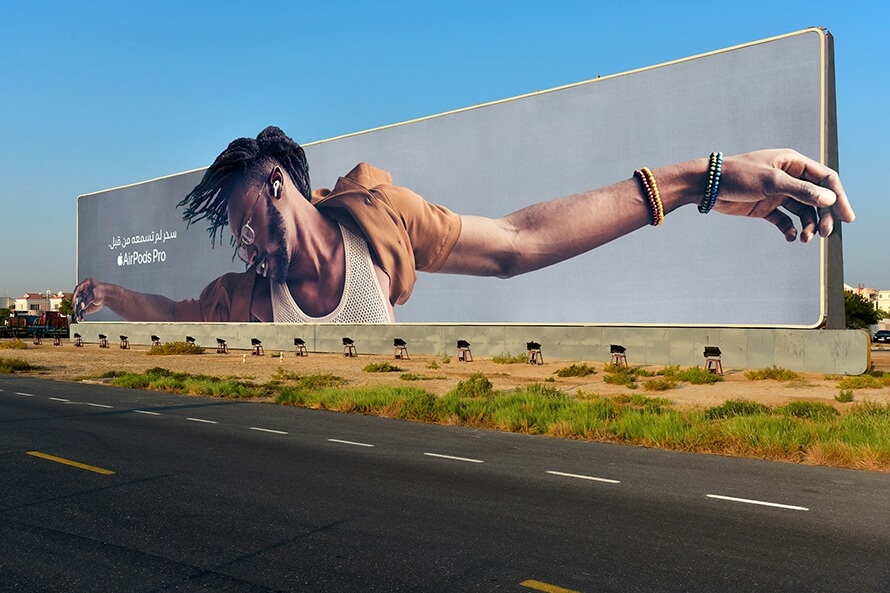
The Strategy:
We live in a culture where individuals are constantly bombarded with stimuli and information. Brands like Apple are trying to change this by including their customers in their advertisements.
Because of this, Apple has created eye-popping OOH advertising that engages viewers and encourages them to take action on their website and in stores.
Apple’s 2016 campaign to promote the debut of the new iPhone 6 and its full HD camera was one of the most famous and inventive out-of-home (OOH) ads ever. In 25 countries and 73 locations, the ad was dubbed “Shot on iPhone” and featured 10,000 billboards with pictures taken by 77 iPhone users.
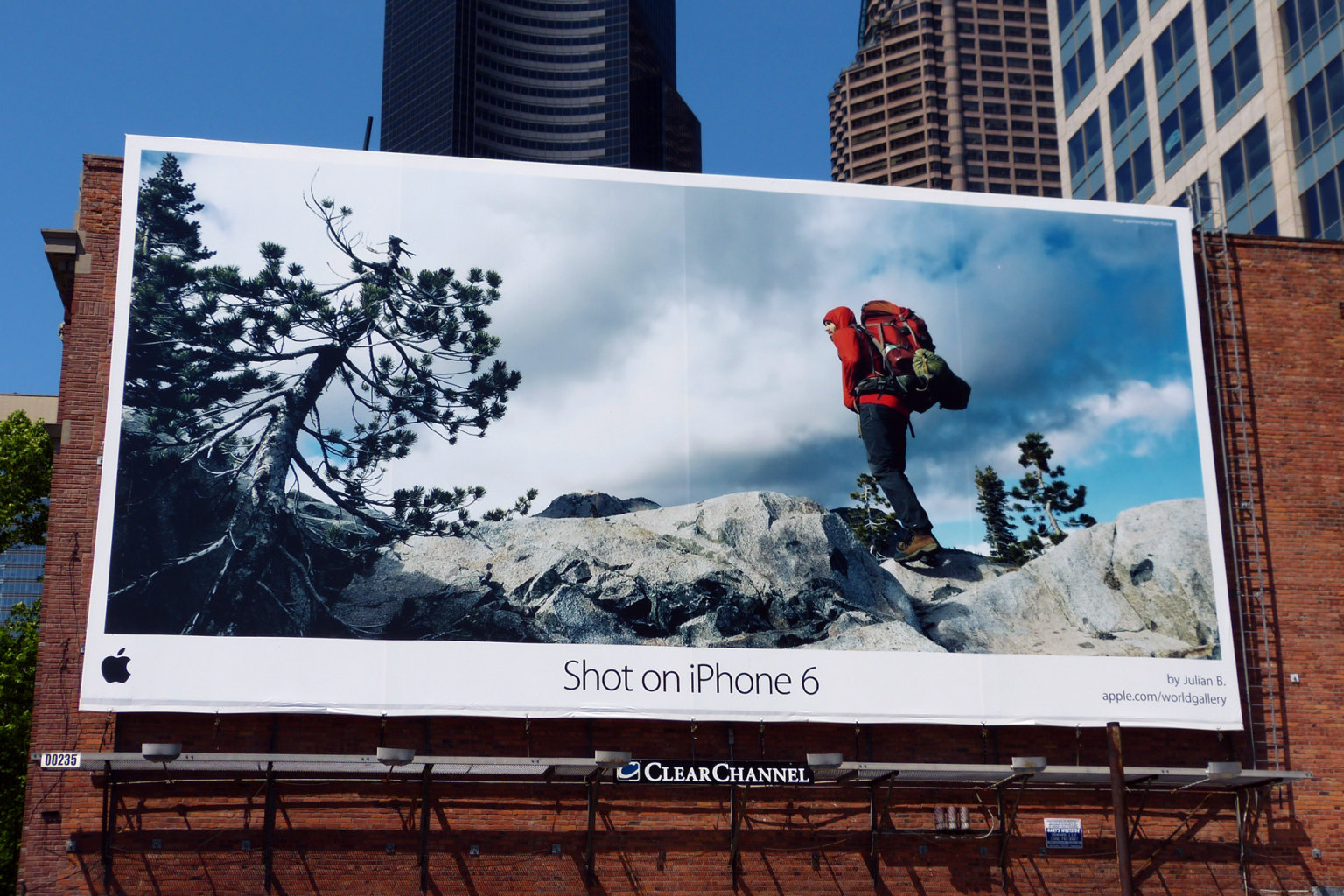
Those who have an iPhone 6 were urged to use the hashtag #ShotoniPhone to share their finest photos on social media in exchange for having their photographs featured on a billboard.
After launching the “Shot on iPhone” campaign, Apple unveiled the iPhone 6 and 6s, which included a slew of fresh photos taken using the device.
Apple urged iPhone owners to send in photographs of their devices in their most vibrant hues, and these images were then shown throughout the world to promote the new color possibilities available on the iPhones.
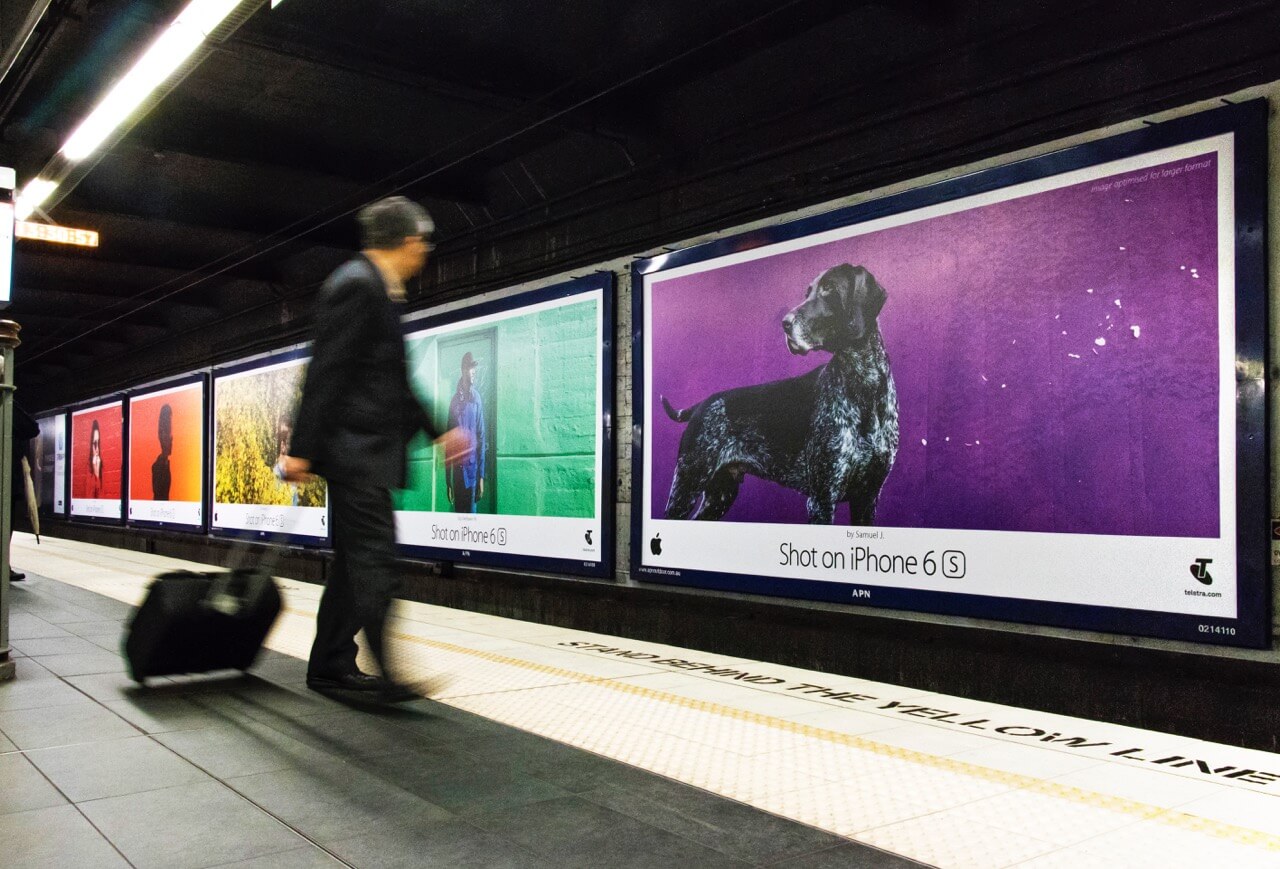
With its “Shot on iPhone” campaign, Apple gave audiences a look behind the scenes of performing artists with an out-of-home (OOH) ad in 2019.
Some of the most popular modern singers and bands were included in the campaign, which included backstage footage and billboard imagery.
The photos and films were created to serve as a behind-the-scenes tour guide for fans and to promote the iPhone.
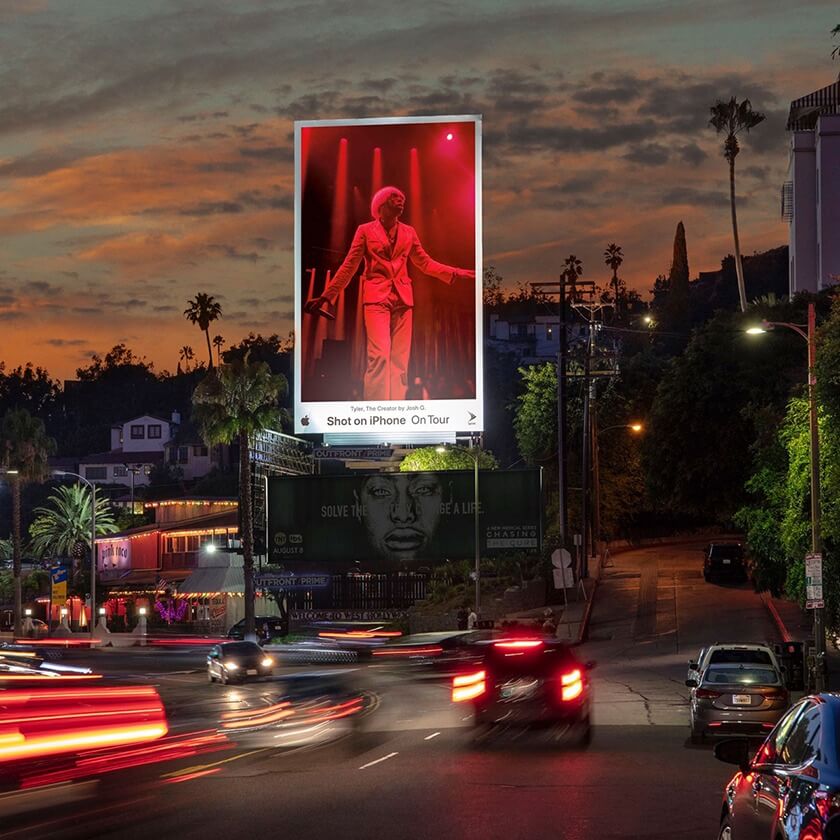
As a result, at the start of 2019, Apple urged iPhone photographers to submit their finest shots for the “Shot on iPhone Challenge,” which would feature their favorite photographs taken using the device’s most popular camera and spotlight their top 10.
Billboards in selected locations, Apple shops, and the internet would show the photographs of the ten winners. Everyone was ecstatic and enthusiastic since it was such a big award.
Pictures from various iPhone models, including the iPhone XS and iPhone 7, and from across the world, including Singapore, Germany, Israel, and other places, were used to choose the winning photographs for the contest.
The Results:
- As reported by the Outdoor Advertising Association of America (OAAA), Apple, McDonald’s, Geico Amazon, HBO, Facebook, Coca-Cola, Google, and American Express were the top 10 advertisers in the first quarter of 2020.
- Their advertising is loud, colorful, large-scale, and hard to miss because of the utilization of OOH. There is no other way to accomplish this.
- The campaign had a lot of heft and visual appeal, but it also engaged its target demographic in a way that was inviting and entertaining.
- Because of the campaign’s longevity and variety over the years, it serves as an excellent example of Apple’s marketing abilities in terms of innovation, execution, and customer involvement (among other things).
- More than 24,000 thought leaders have praised the campaign for its innovation and success, and it has garnered over 6.5 billion media impressions to date. The campaign has won the coveted Cannes Lions Outdoor Award for its innovative advertising.
- To keep up with today’s innovative, forward-thinking entrepreneurs, this campaign is always developing and changing.
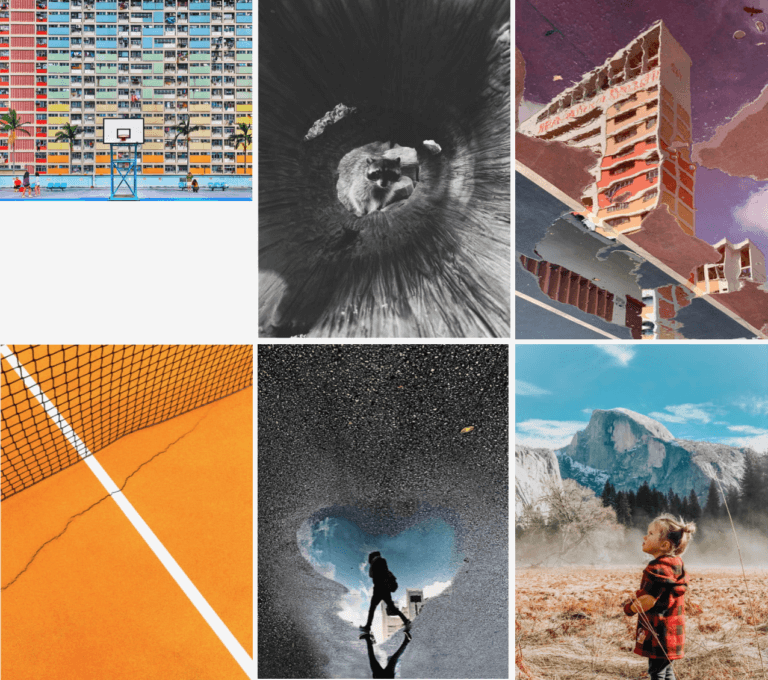
- The fact that Apple is a huge and well-known tech company comes as no surprise after looking at some of their most adored OOH ad campaigns and analyzing why they have preferred OOH advertising.
Key takeaways:
- OOH is the best approach to engage people with an advertisement. This is because, regardless of purchasing patterns, outdoor advertising has an inescapable daily intersection with viewers.
- Using OOH advertising to build dynamic and relevant campaigns that are more meaningful and relevant to customers is now possible for businesses like never before. In other words, using many advertising channels rather than just one can help you reach a larger audience and get a better return on your marketing investment.
- Because people are online when they see digital ads; yet, out-of-home (OOH) is what gets them interested in the first place.
- The question now is: how can we arouse interest and maintain it? With a lot of originality. A recent study states that 75% of an ad’s effect is influenced by the quality of its creativity. This is an area in which Apple excels spectacularly.
- For example, the “Shot on iPhone” campaign would not have been feasible without the help of its audience members.
- Their advertising connects with people, and that’s why they’re successful in marketing. Big, bold, and imaginative advertising grabs the attention of customers, who appreciate the effort.
- Customers also appreciate advertising that includes and engages them, and Apple excels at this. Apple exploits the flexibility to post OOH advertising virtually everywhere to their advantage by strategically placing them in high-traffic areas where everybody can see them, even their competitors.
- In addition to Apple, several of the world’s top corporations continue to grow their OOH advertising expenditures on an annual basis.
- Despite being one of the earliest types of advertising, word-of-mouth advertising has shown to be equally as essential as other forms of promotion in a company’s success, if not more so.
- If a firm like Apple can achieve such success while promoting out-of-home advertising, there is no excuse for other ambitious businesses not to venture into out-of-home advertising, regardless of industry.
Amazon
The Strategy:
A few weeks after becoming the world’s second $1 trillion market valuation business, Amazon now ranks as one of the top 3 digital advertising companies.
Billboards and other out-of-home advertising will be used by the firm to mold online retail behaviors and unify the consumer experience across all channels, including online, in-store, and anywhere else along the route, to maintain its supremacy.
Outside of Whole Foods, Amazon has struggled to establish a large physical retail footprint despite its dominance in online shopping. But Amazon Go shops, which are expected to have 3,000 sites by 2021, may quickly change that.
In Times Square, a massive structure appeared, although it had nothing to do with corporate or condo space. It was an Amazon Echo of sorts, mounted to a billboard to promote Amazon Music’s streaming capabilities. The 79-foot (seven-story) building was an Amazon Echo of sorts. Even though it featured LED lights to give it a modern appearance and highlight its capabilities, the inventive campaign was simply a replica of the Amazon Echo.
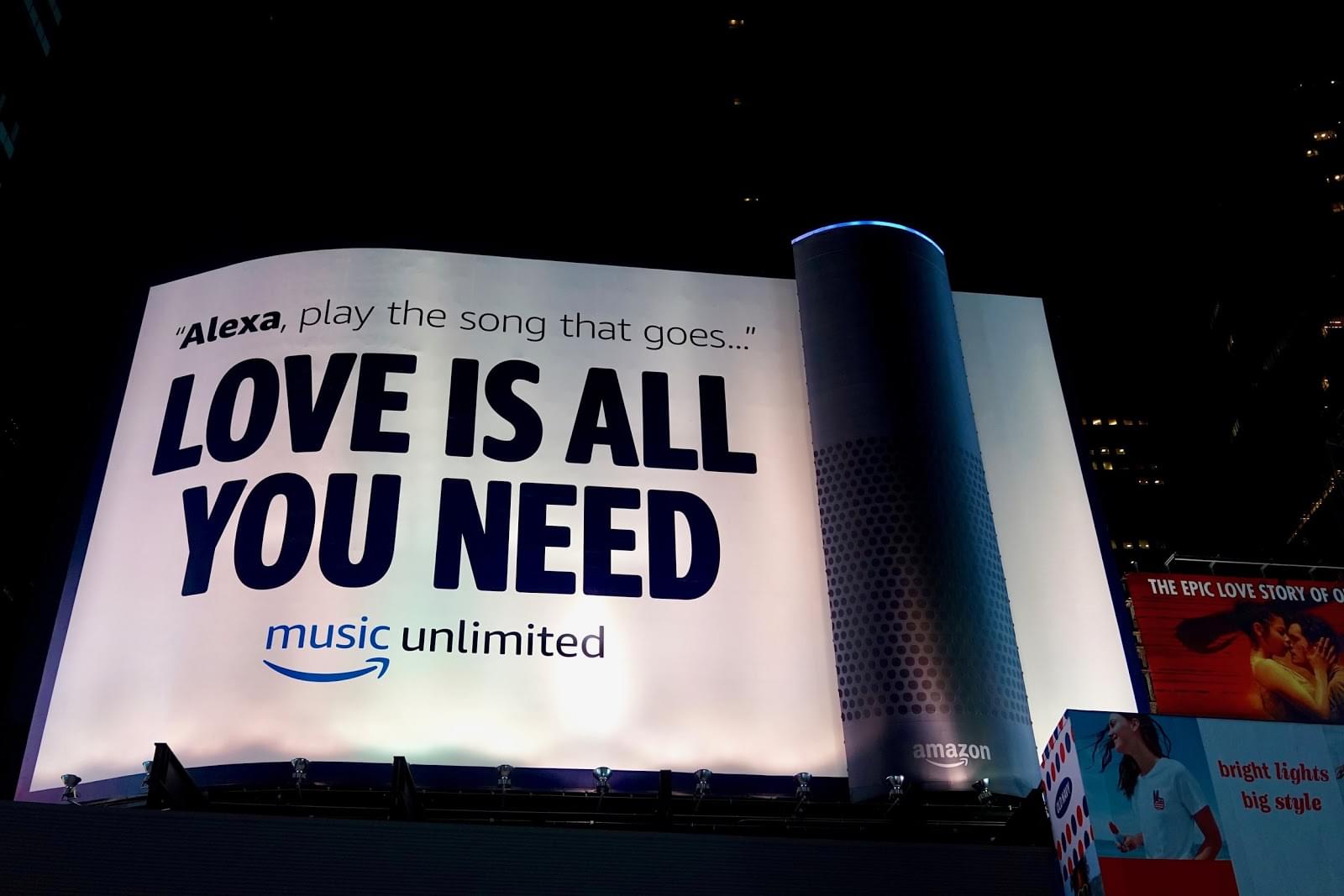
Amazon is now locked in a battle with Walmart, the world’s largest retailer, over who can get the most market share in online purchasing. The Amazon experience at its physical retail outlets, on the other hand, may aim to set it apart from the competition.
As a result, Amazon may learn from Apple’s retail approach and develop a successful one in the real world.
Amazon can now use mobile data to offer customers the appropriate items at the perfect time on OOH media, resulting in increased in-app engagement and sales.

For example, Amazon may utilize phone app location information and purchase history to target the largest concentration of moms in a given region who have purchased Pampers baby goods in the last month, then offer discounts and suggestions for Bugaboo bikes and accessories.
Also, based on their location, Nespresso coffee machines might be advertised to regular Starbucks consumers before Black Friday.
Product presentation might be filtered by DOOH’s contextual relevance. It would be possible for Amazon to display health-related items in physiotherapy and doctor’s office waiting rooms by treating digital screens as “virtual shelves.”
The Results:
- Starting with the struggle for supremacy in product search, Amazon has beaten out Google.
- A consumer seeking information on a retail product will more than half the time goes to amazon.com or the Amazon app on their smartphone.
- In the similar way that LinkedIn and Facebook have transformed the way individuals look for jobs and build their social life, the firm has transformed consumer behavior for shopping.
- Customers can buy nearly anything with just one click on Amazon, no matter where they are or what time of day it is.
- This provides the firm a unique look into the intentions of customers and enables them to link their online and offline purchase patterns.
- Amazon has a tremendous advantage over its competitors owing to the information it already has on file as retail is reinvented thanks to targeted marketing and the needs of Millennial consumers in the mobile and e-Commerce era.
- To track changes in sales for a certain SKU, Amazon would use records of device ID exposure or even deliveries. Campaign assessment in real-time allows for creative content selections to be modified and made on the go, providing an additional value.
Key takeaways:
- When it comes to reaching customers across the whole customer experience, out-of-home (OOH) advertising is the final mile.
- Ad campaigns on digital OOH screens have the potential to be more impactful and seamless than ever before for Amazon and other e-commerce firms to collaborate with CPG producers.
- As the only conventional type of advertising predicted to rise by 3% to $9 billion in 2018, the channel has had a resurgence in recent years.
- Using OOH’s data analytics and online ad marketplace, digital giants may now take advantage of this medium to their benefit.
- Billboards and other OOH assets may be converted into digital, on-demand stores and locations for customized product placement because consumers can now buy from anywhere.
- To engage customers with advertising for items of interest at the same time decisions are being made regarding one’s health, digital out-of-home can assist e-Commerce companies in extending their physical presence.
- They want a linked and integrated experience in the real world, where brands and merchants engage with people when and when it is most appropriate. A lot is on the line, as retail sales in the United States still account for more than 70% of overall sales.
- When demographic data based on geography is combined with the proper time and situational variables, everything is conceivable.
Coca Cola
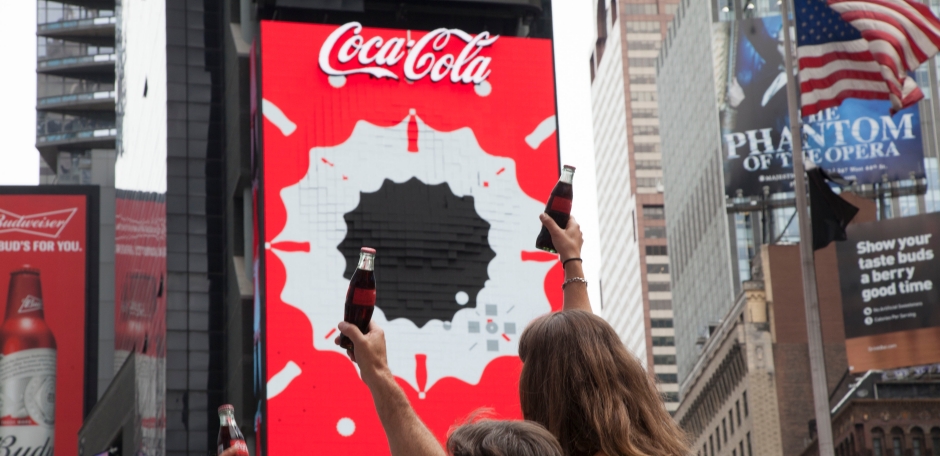
The Strategy:
With creative vending machine OOH ads, Coca-Cola has gone above and beyond what one may anticipate from a beverage brand’s OOH presence.
Most of these cases are based on a message that goes beyond a purely technical advancement.
It’s perfect for a company like Coca-Cola, whose advertising strategies and installations are built on the concept of sharing.
One of Coca-OOH Cola’s campaigns, aimed at promoting recycling, utilized the company’s white ribbon swirl to create signage that directed people toward recycling bins situated right beneath the billboards throughout Europe
Coca-“Share Cola’s a Coke” campaign, which focuses on the relationships consumers have with their friends and family, is one of its most recent tactics.
JCDecaux Ireland and Coca-Cola Ireland collaborated on the design of a branded tram for Dublin. Every seat had a crimson cover with a popular name stitched on it, giving commuters’ trips a more personal touch.
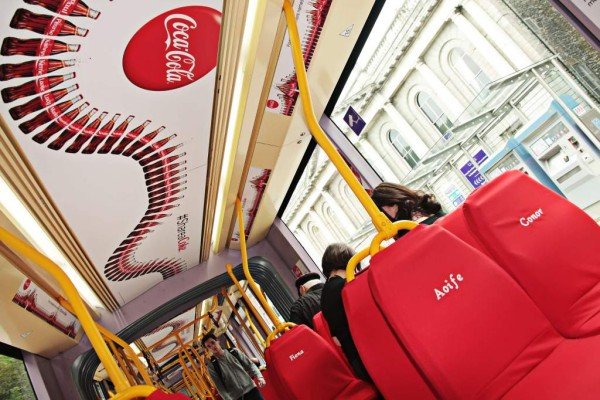
Domination decals and posters were used throughout the inside, including on panels, strap-lines, window trim, and the whole ceiling.
Coca-Cola and Gewista turned a countrywide network of big format sliding panels into unique creations that urged people to Share a Coke with their friends.
The unique models included a big coke bottle with glass over the spot where you’d anticipate seeing the Coke brand. As the panel scrolled, the names of the persons in the window became visible.
For nighttime visibility, five of the scrolling Innovate sites were outfitted with large Coca-Cola bottles and an exterior light source. Such a straightforward implementation fits in nicely with the brand’s overall approach.
In important metropolitan areas, JCDecaux Netherlands outfitted 10 2m2 CityLight panels with 65inch display screens. Names prominent in the Netherlands were generated at random and presented on these displays. This created the impression that a Coke bottle had been personalized. It’s simple to do and has incredible results!
With this retail promotion, over 2,000 of the most well-known British names will be featured on Coke bottles, replacing the word “Coke” altogether.
Last week in July, the retail promotion was coupled with a four-day Share a Coke Party Pod Outdoor dominance campaign in London’s Covent Garden.
Following the customization of a Coke or Coke Zero bottle with their name or the initials of a loved one, onlookers were asked to visit a Share a Coke selfie store.
They may snap a photograph of themselves with their customized bottle at this location. After that, attendees may party on the campaign’s rooftop party pod while listening to music and sharing a Coke with their companions.
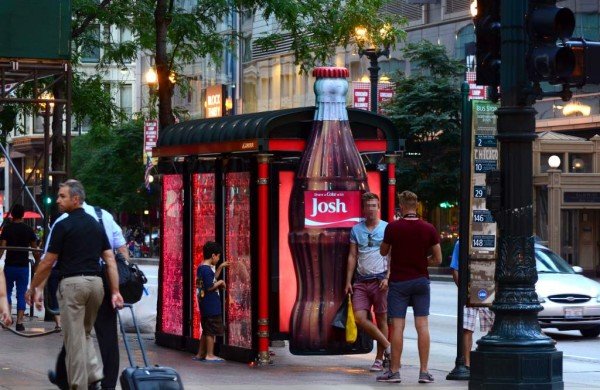
Coca-Cola and JCDecaux North America constructed huge 3D Coke bottles on Chicago bus stations in conjunction with the ‘Party Pod’ promotion in London and the Share a Coke campaign.
To place their name on the bottle, passersby used touchscreens to enter it. For a brief moment, their name was projected on a huge Coke bottle, allowing passersby to take photos of themselves with the bottle.
Additionally, Coke used a “bubble wall,” plexiglass chambers with air vents, “pucks,” and LED lights to showcase its fabled frothy beverage. The nighttime glow created by the whirling lighting display was mesmerizing.
It was successful marketing because it provided visitors and locals with a new and exciting way to experience this beloved beverage.
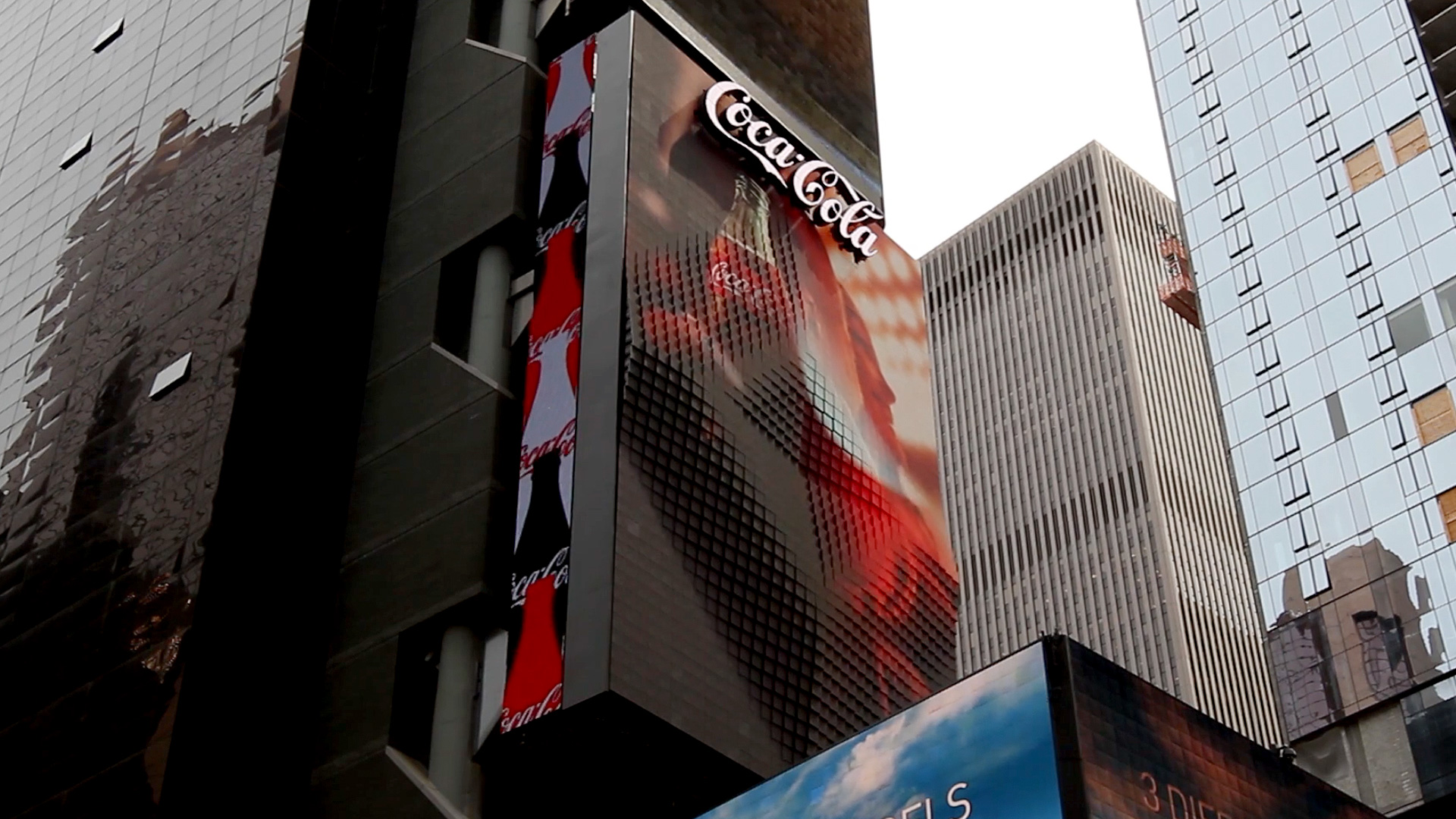
The Results:
- Coca-Cola and its advertising firm MediaCom deemed this campaign a huge success after receiving a ton of favorable feedback about it. It also reaffirmed the undeniable effectiveness of out-of-home (OOH) transportation advertising with complete branding.
- More than 23,000 people have taken part in the campaign to date.
- Outside of Times Square and Piccadilly Circus, their commitment to outdoor advertising has been strategic to Sydney’s King’s Cross and beyond.
- Experiential marketing’s potency is demonstrated by the fact that participants linked the Coke experience with feelings of happiness and delight. As a result, the campaign went viral. It’s still a must-see sign today, and it sticks out in the Out of Home hotspot amid the others.
Key takeaways:
- If designed and delivered correctly, OOH may help businesses instantly become worldwide.
- Amaze your audience with something new. One lovely morning, students of a Singapore college found a Coca-Cola vending machine on the grounds. If they embraced the machine in a certain way, they’d get a free can.
- Increase the intensity of your feelings. Coca-Cola set up machines in both India and Pakistan where people could dance and touch hands to win free cans because of the tense ties between the two nations.
- The inclusion of an air of mystery makes things more interesting. There was a vending machine on a college campus that sent out dozens of Coca-Cola bottles, forcing students to share and make new friends. Other times, the machine dispensed pizza, balloon animals, and even a very lengthy meal. If you’re looking for happiness, where should you look next?
- Choose Local Characteristics from the drop-down menu. Coca-Cola set up a vending machine where customers could pay in their native tongue for a chance to win a free bottle as a way of celebrating linguistic variety and pride. Swedes installed the machine.
- It’s always nice to get something in return. The majority of vending machine developments involve new ways to pay for the products. Coca-Cola once teamed up with Google Wallet to develop a novel way to keep customers coming back for more.
- Give them something to look forward to. Coca-Cola created consumable commercials in collaboration with Shazam, elevating out-of-home advertising to a new level. In the promotion, consumers could use the application to refill the bottle and then go to a store to obtain a free bottle by using a discount coupon they got from filling it on the app.
- Concentrate on acquiring and enticing a large audience. Coca-Cola built an innovative vending machine in Australia that gave out free bottles to customers who shouted “Yes” to it. The machine used speech recognition as its primary technology.
McDonald’s
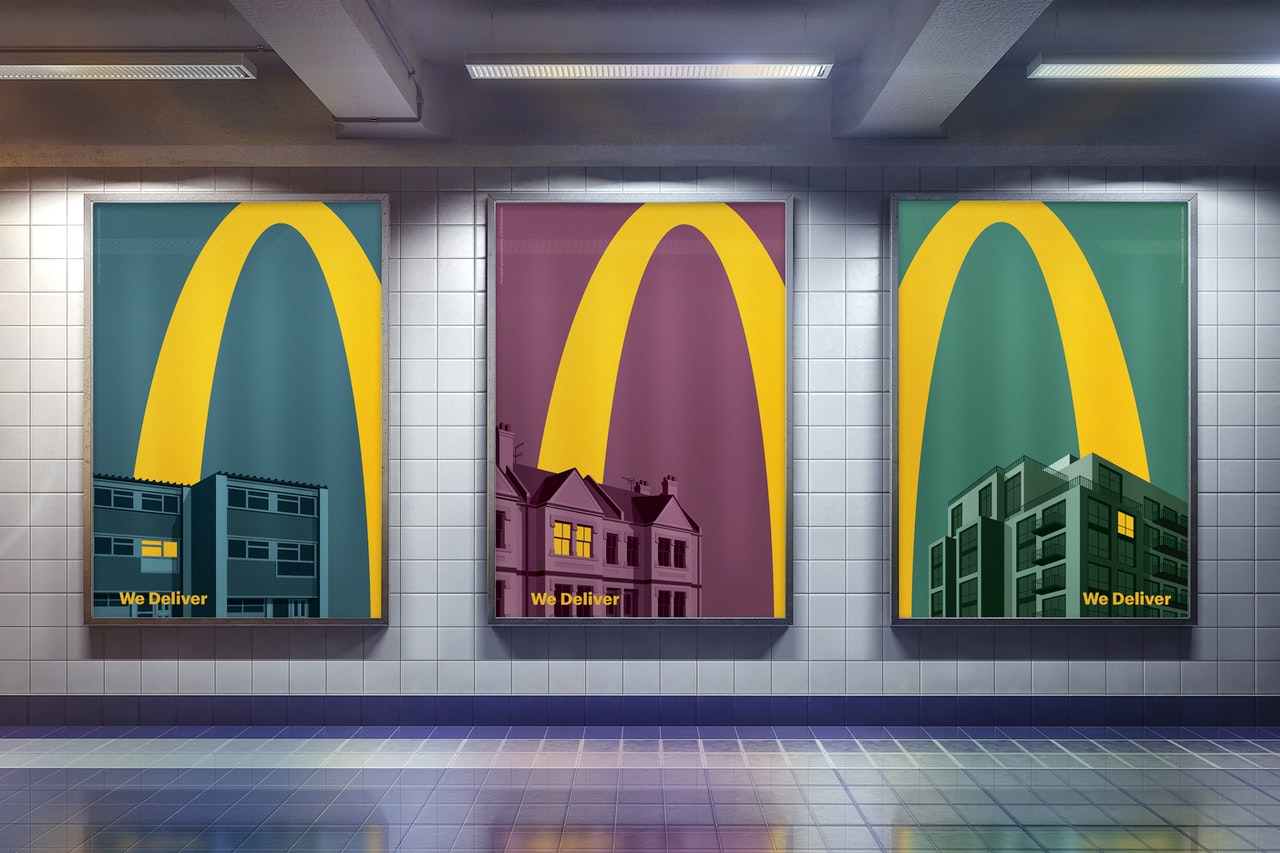
The Strategy:
The OOH billboard industry has grown for 31 quarters in a row, with billboards accounting for 66% of the total. Your originality and general campaign knowledge must stand out in a crowded environment, even if it’s just a few square feet.
McDonald’s is well aware of this requirement and caters to it accordingly. It has put together several successful out-of-home ads in the previous several years because of its inventiveness and strategic position. A couple of weeks ago, the fast-food restaurant started airing directional DOOH advertisements in Paris, using vivid representations of its famous French fries as wayfinding signs for vehicles and pedestrians.
Distance, as the saying goes, maybe a deciding factor. This is why McDonald’s has almost 1000 drive-thru facilities in France, but Burger King only has about 20. Since the next Burger King drive-thru is 160 miles away, McDonald’s set up two billboards for highway drivers entering Brioude, a village of 6,700 inhabitants in south-central France.
While McDonald’s serves as a source of creative ideas for strategically placed billboards, the next iteration of out-of-home advertising will be more digital. Using billboards and digital advertisements together may increase online activity by four times, according to Nielsen research.
The world’s most recognized fast-food chain, McDonald’s, is increasingly experimenting with logo-free commercials in recent years, using the strength of its world-renowned menu and visual identity to produce ads that scream McDonald’s without ever saying it.
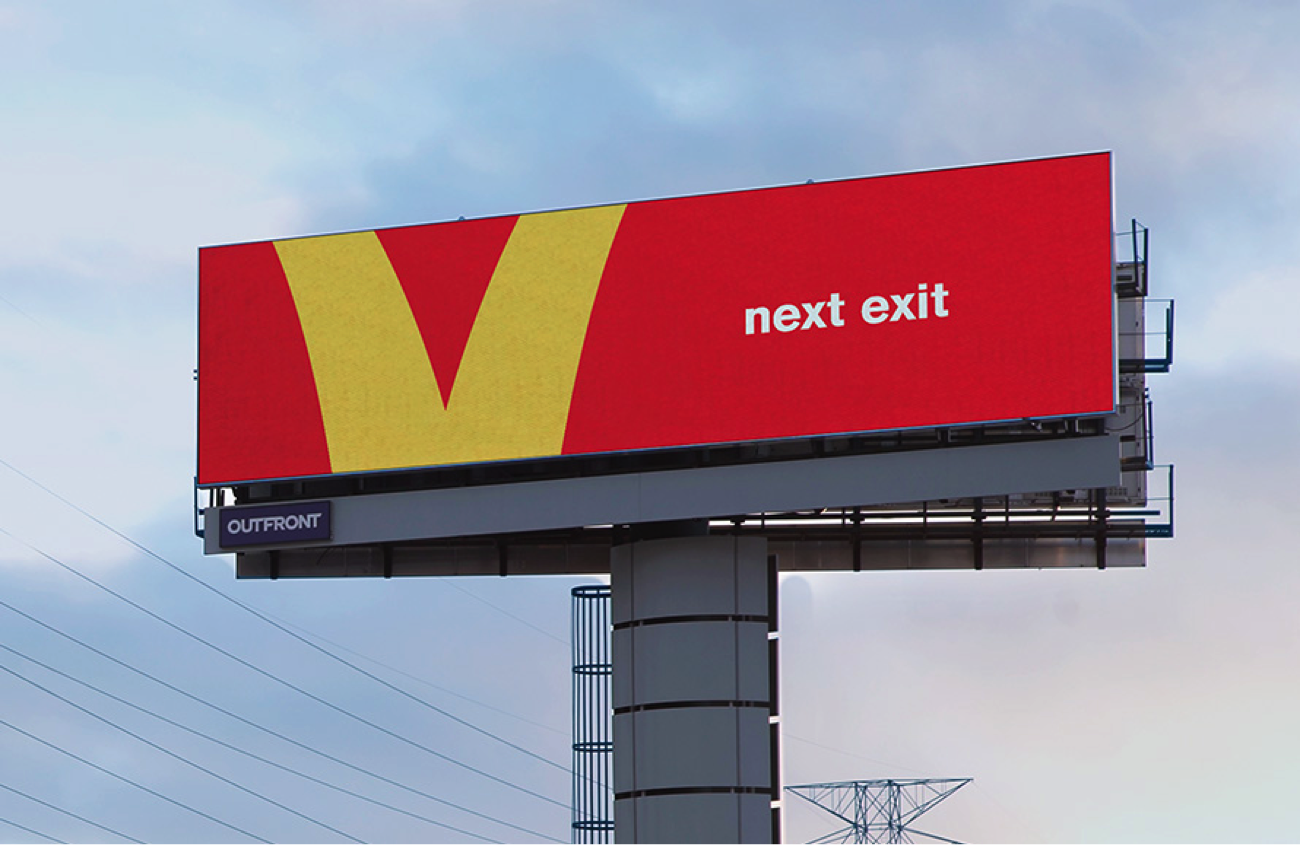
There was no logo in the advertisements. Only the typeface and color scheme of McDonald’s were used.
McDonald’s has released a new ad featuring french fries pointing in the direction of the closest location. It’s just a work of art and has nothing to do with OOH execution.

On your computer monitor, every design seems stunning as a work of art. Neither the negative nor the positive can be said about this one. We’re arguing that until it’s ‘on the street’ and in an OOH format, advertising doesn’t matter.
McDonald’s has devised an out-of-home (OOH) advertising strategy. OOH advertising is being used as part of a wider brand recall effort to reach out to current consumers and attract new ones.
Once the outdoor temperature exceeds 15 degrees Celsius, the digital advertisements in the campaign smoothly swap from one creative to another. A dynamic copy update is initiated automatically, resulting in relevant and interesting material.
McDonald’s is using JCDecaux, Exterion Media, and Wide Eye Outdoor’s digital OOH screens with the platform, which also works with different media owner networks.
The Results:
- The outdoor platform has helped McDonald’s strengthen its brand presence in North and East India.
- With its famous M logo, the fast-food chain has managed to re-establish its brand recognition in the Delhi NCR market.
- The design has been kept to a minimum with a huge back-lit ‘M’ cutout sparkling in the night combined with a presentation of its highly liked burger, soft drink, and fries to re-establish the connection with consumers.
- As part of the company’s normal marketing plan, the OOH campaign aims to increase market share.
- Amid Britain’s ongoing struggle with the coronavirus epidemic and a countrywide lockdown, the advertisements offer McDonald’s home delivery.
- Leo Burnett has created another gratifying simplicity for McDonald’s with this simple and instantly recognizable ad.
Key takeaways:
- The trademark yellow and logo form of McDonald’s advertisements make them instantly recognized.
- Other companies with distinctive forms and colors, such as Spotify’s lime green level logo or Twitter’s iconic bluebird, might theoretically produce the same impact, according to researchers.
- A well-placed billboard or outdoor advertising pointed towards your store or flagship store can drive more traffic than utilizing a leaflet distributor or other mass tactics, as many target audiences can come close to your business but never discover it.
Final Thoughts
When it comes to digital technology, elegance in implementation and creative quality are important.
Because of the increasing maturity of digital OOH advertising, more agencies will use live data streams to create more relevant, engaging, and eye-catching commercials.
So, if you haven’t thought about how you may enhance your OOH ad creativity in real-time, now is the moment.
